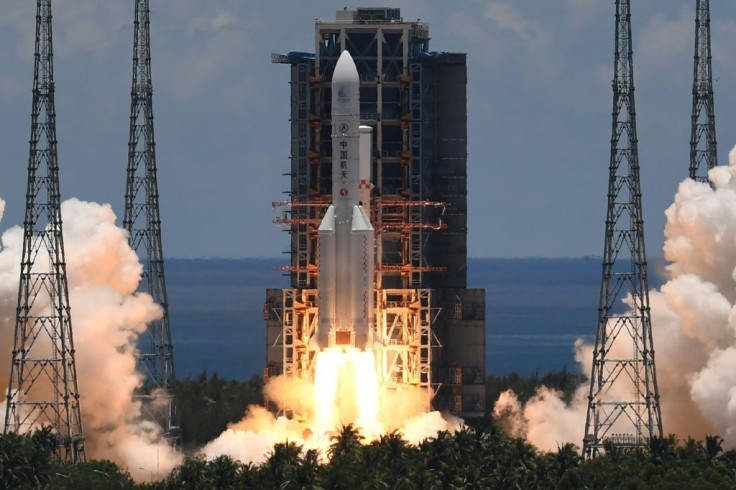Humankind's Achievements In Spaceflight A Success Despite Distressing 2020
KEY POINTS
- The U.S., UAE and China all launched Martian space probes
- SpaceX successfully launched four astronauts to the International Space Station
- NASA is gearing up for the next historical mission to the Moon
Space gave the world something to be joyous about in an otherwise stressful year, marked by the dreadful COVID-19.
Three countries successfully launched spacecraft to Mars; a robot grabbed samples from an asteroid and for the first time in nearly a decade, astronauts blasted into orbit from the American soil.
There’s a lot to look forward to in 2021: Perseverance, the latest Mars rover, will land on the Red Planet. By fall, Hubble’s successor, the mighty James Webb, will finally launch after a series of delays.
While the pandemic complicated space operations across the globe in 2020, most high-priority missions stayed on schedule, led by the United States, China and the United Arab Emirates sent their robots to Mars in July.
The first interplanetary spacecraft of the UAE, an orbiter, would study the Martian atmosphere. NASA's Perseverance Rover is expected to land on Feb. 18 at an ancient river delta and lakebed where microbial life might have once existed.

China's orbiter-rover pair Tianwen-1 will also hunt for evidence of past life. The country also aimed for the moon this year, landing and then blasting off the lunar surface in December, with the first moon rocks collected to return to Earth since the 1970s.
Recently, Japan has taken back bits of asteroid Ryugu—its second batch of asteroids in ten years. More asteroid samples are on the way: NASA's Osiris-Rex mission vacuumed a handful of Bennu asteroid gravel in October to return in 2023.
Meanwhile, Elon Musk's SpaceX was buzzing in 2020. In May, it became the first private corporation to place humans in space, an achievement historically claimed by only three global super-powers. The two test pilots became the first NASA astronauts to fly a new spacecraft brand in almost 40 years and the first to leave Florida since the shuttle program concluded in 2011.
Four more astronauts flew the SpaceX Dragon spacecraft to the International Space Station in November. Three weeks later, SpaceX launched the largest cargo shipment to the NASA space station.
Boeing wants to keep up with SpaceX in the astronaut-launch department, while space tourism may finally take off.
As the other recruited crew carrier of NASA, Boeing is scrambling to get the Starliner capsule back in operation following a software-spoiled test flight in December 2019. The do-over—again with no one onboard—is being cooked. If the patch succeeds and the capsule eventually hits the space station, the first Starliner crew will be launching by the summer.
Meanwhile, Musk culminated the year with a stratospheric Starship test flight, a rocket he was building to take people to the Moon and Mars. The demo was better than anybody expected until a flaming blast at the touchdown. Still, Musk was very ecstatic.
SpaceX at the same time is expanding its Dragon-Riding Client. At the end of 2021, SpaceX plans to fly the first privately funded Dragon flight in a contract negotiated by Houston-based Axiom Space.
Two other space exploration companies—Jeff Bezos' Blue Origin and Richard Branson's Virgin Galactic—are still performing test flights and have yet to set concrete deadlines for launching passengers on short space and return flights.
NASA is also planning the debut of the latest moon rocket in November, the Space Launch System, with an Orion capsule that will be deployed without a crew.
Trump's administration set a 2024 target for astronauts to walk on the first moon since NASA's Apollo program a half-century ago. Just this month, NASA already chose 18 astronauts to train on a moon program called Artemis.
Only time will tell if President-elect Joe Biden makes changes. For now, it's looking to be a great 2021 for space.
© Copyright IBTimes 2024. All rights reserved.












